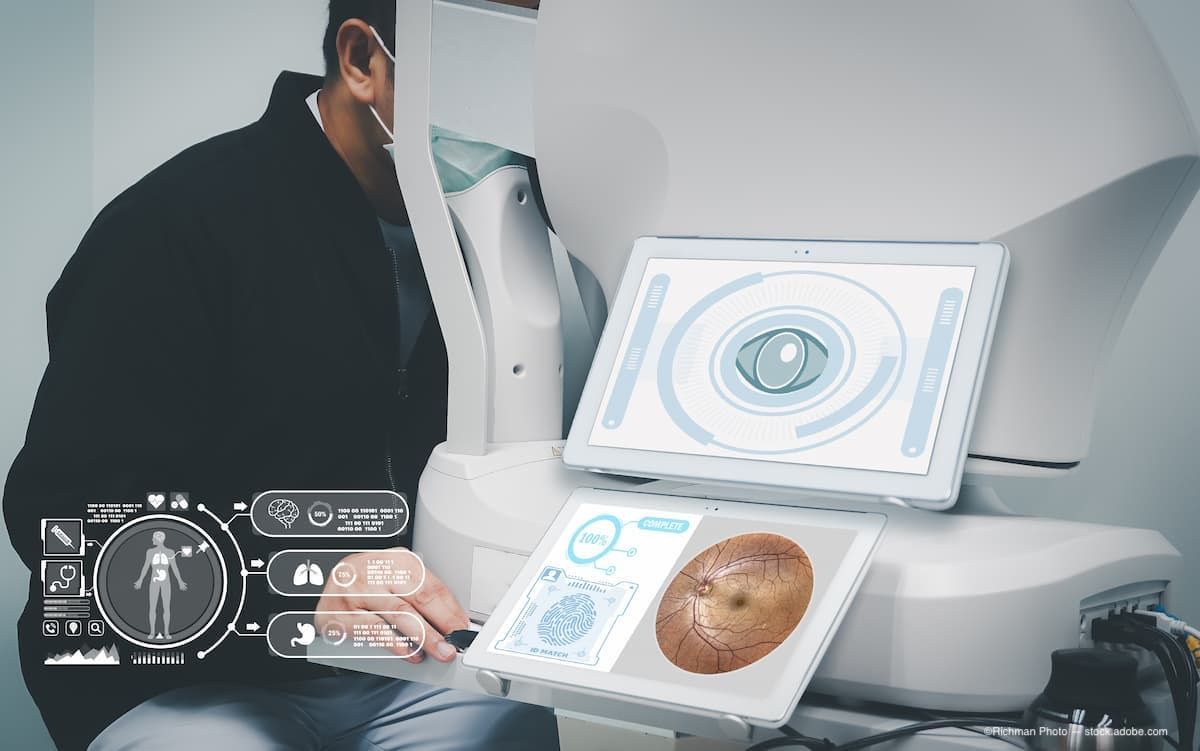News
Article
Grant from the Optica Foundation fuels research to help detect undetectable glaucoma
Author(s):
The system hopes to use optical coherence tomography (OCT), while at the same time, leverage air and ultrasonic pulses to excite the mechanical waves in the cornea, enabling the detection of normotensive glaucoma.
(Image Credit: AdobeStock/Richman Photo)

The Optica Foundation released information on new vision research funded by the 2023 Optica Foundation Challenge.
Fernando Zvietcovich, PhD, Pontificia Universidad Catolica del Peru, Peru, has proposed a light-based technique to solve challenges in diagnosing health-related concerns, specifically glaucoma.
Under the 2023 Optica Foundation Challenge Samantha Grist, PhD, The University of British Columbia, Canada has also proposed a light-based technique to help diagnose menopause.
According to a press release from Optica Foundation, each research effort is supported by a $100,000 grant from the Optica Foundation, and Grist and Zvietcovich will use these funds to advance their research.1
"As healthcare diagnostics advance, new opportunities for non-invasive, light-based techniques continue to emerge," said Alan Willner, chair of the Challenge Selection Committee in the press release. "Excitedly, both Dr. Grist and Dr. Zvietcovich are exploring novel, innovative ways of using light to address issues found in current modalities—precisely the kind of exemplary work the Optica Foundation Challenge strives to address."1
In normotensive glaucoma (NTG), corneal pressure levels remain in the normal range, making early detection and intervention difficult, if not impossible. To address this, Zvietcovich has proposed the development of a clinical multi-excitation optical coherence elastography system.
According to the press release, “This system will enable high-resolution structural images of the eye through optical coherence tomography (OCT). At the same time [it] will leverage air and ultrasonic pulses to excite the mechanical waves in the cornea, providing biomechanical information of the eye to help obtain corrected and adjusted intraocular pressure values, thus enabling the detection of NTG.”1
"This field of applying OCT with other imaging modalities and excitation sources is really just emerging," Zvietcovich said in the release. "We're measuring properties in the human eye and changes in biomechanics that were not possible to measure before, and we have entered a new dimension with the information that we can now see. We're in the early stages of new ways to monitor and propose treatments for the eye."
Zvietcovich plans to finalize designs and build a prototype optical coherence elastography system as a first step. Once made, Zvietcovich says he will initiate modeling tests to refine the approach and take the system into clinical settings. He plans to have the first prototype in 6 months and ultimately plans on holding a preliminary patient study with 20 control patients, 20 patients with NTG, and 20 patients with high-tension glaucoma.1
References:
Photonic Technologies Introduce New Ways to Diagnose Menopause and Glaucoma. Press release. Released December 4, 2023. Accessed December 11, 2023. https://www.prnewswire.com/news-releases/photonic-technologies-introduce-new-ways-to-diagnose-menopause-and-glaucoma-302004779.html
Newsletter
Don’t miss out—get Ophthalmology Times updates on the latest clinical advancements and expert interviews, straight to your inbox.




